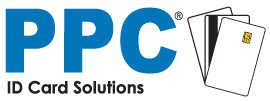Imagine holding a tiny, powerful computer in your wallet. That’s precisely what you’re doing when you carry a smart card.
You’re probably using them in your daily life, from credit cards to transportation passes, and maybe even in your workplace as an ID Card.
The world of smart cards is diverse, with each type designed to cater to specific needs and environments. Whether it’s the secure and data-intensive applications of contact smart cards or the quick and convenient transactions enabled by contactless ones, these technologies play a crucial role in modern security and commerce.
These pocket-sized cards with embedded integrated circuits or ‘chips’ can process and store data quickly. This technology allows you to perform tasks such as financial transactions, identification, and data storage with increased security and convenience.
Most people don’t think about what exactly a smart card is, and with the ubiquity of smart phone technology, it’s hardly remarkable technology for today’s digital natives.
Smart cards can be either contact chip, or contactless, with the advantage of contact ship is that they can provide faster transactions for larger amounts of data (e.g. high security encryption certificates) and is protected against its data being compromised while still in your wallet.
However, there are a few features in common that maintain their importance in today’s technology landscape despite the popularity of devices such as a mobile phone which can replicate many of their functions, including;
- Convenient Credit Card Size Form Factor that fits seamlessly into your wallet or Purse,
- No need to “charge” for it to work, as smart cards (contact or contactless) derive their power from the reader device,
- Independent of other device functions and usable in environments where phones cannot be used (e.g. a student exam, where ID is required, but a phone cannot be used),
- Less likely to break when dropped,
- Affordable for mass issuance,
- Independent of device operating system type or version.
Smart Cards are used for a wide range of applications. If you keep reading, I’ll explore some of the more popular smart card uses.
What are Smart Cards used for?
Most of us use smart cards daily, with the most popular uses being credit or debit cards, transit ticketing cards, and even many drivers’ licenses, but it doesn’t stop there.
In recent years many schools and businesses have implemented smart ID cards to streamline many daily functions such as;
- Time and attendance,
- Photocopier cost recovery,
- e-wallet and vending,
- PC log-on,
- Library borrowing,
- Access Control.
Smart cards are a great way to turn a standard ID card into a smart ID however one of the limitations has traditionally been registering the specific card with an individual card holder. This can be overcome using an ID card printer with smart card encoder (smart card printer) which can save the labour-intensive process of assigning the card manually.
PPC has specialised in this area and have unique out of the box solutions that enable the automated production and registration of ID cards. This is a very popular solution in Secondary Schools and Universities.
The PPC solution can accommodate a variety of smart Card Types, brands and models, depending on your needs.
Types of Smart Cards
Understanding the different types of smart cards can help you better appreciate their versatility in our daily lives. There are primarily two types: contact and contactless smart cards.
Contact Smart Cards
Identifiable by the brass/gold coloured chip embedded into the card, (the same chip that is also used as a SIM card in mobile phones) Contact smart cards require direct physical contact with a reader to function. They are prevalent in sectors like banking and finance, particularly for credit and debit card transactions. These cards are also vital in high-security access control and logical access environments, adhering to standards like the US government’s FIPS 201.
Key Features of Contact Smart Cards
Contact smart cards, as opposed to their contactless counterparts, have distinct features that make them suitable for various applications:
- Physical Contact Requirement: Contact smart cards must be inserted into a card reader for data exchange. This physical connection is essential for the card’s operation, as it allows for direct communication between the card’s chip and the reader [1].
- Built-in Contact (Terminal): These cards have a built-in contact or terminal, often visible as a gold or silver chip on the card’s surface. This contact interfaces with the card reader to facilitate data transfer [2].
- Secure Data Storage and Processing: Contact smart cards contain a microprocessor chip capable of storing and processing data. This chip can perform cryptographic operations, making the cards suitable for secure applications like banking and personal identification [6].
- Power and Communication: The physical contact with the reader provides power to the card’s chip and establishes a communication channel. This setup allows for more complex and secure transactions compared to contactless cards, which rely on wireless communication [4].
- Application in Various Fields: Due to their secure nature, contact smart cards are widely used in applications requiring high security, such as in credit/debit cards, government IDs, and access control systems [1].
Contact smart cards are characterized by their need for physical contact for operation, secure data storage and processing capabilities, and their use in high-security applications. Their design and functionality make them a reliable choice for secure data transactions.
Contactless Smart Cards
Contactless smart cards represent a significant advancement in the field of secure and convenient data exchange. These cards employ Radio Frequency Identification (RFID) technology, which enables them to communicate with a reader without the need for physical contact.
A prominent example of contactless smart cards is the MIFARE brand. These cards are widely used across various sectors, including transportation, finance, access control, and educational institutions for ID purposes. Their ability to quickly and securely process transactions makes them a popular choice in scenarios where speed and security are paramount.
Key Features of Contactless Smart Cards
- RFID Technology: At the heart of contactless smart cards is an embedded RFID microchip. This chip is responsible for storing and transmitting data to RFID readers wirelessly.
- Secure Data Transfer: Despite the wireless nature of their communication, these cards are designed to be secure. They can carry encrypted data, making them suitable for sensitive applications like banking and personal identification.
- Speed and Convenience: One of the most significant advantages of contactless smart cards is the speed of transactions. They are ideal for environments where quick processing is essential, such as in public transport systems or contactless payment systems in retail.
- Versatility: These cards are not just limited to financial transactions. They can be used for a variety of purposes, including access control in secure facilities, as identification cards, and in loyalty programs.
- Security Measures: Concerns about the security of contactless cards, especially regarding long-range unauthorized reading, have been addressed. Modern contactless smart cards are equipped with security features that make such breaches extremely difficult, if not impossible.
In summary, contactless smart cards, through their use of RFID technology, offer a secure, fast, and convenient solution for various applications, ranging from making payments to accessing secure locations. Their ability to facilitate quick and secure transactions without physical contact makes them an increasingly popular choice in our digitally evolving world.



